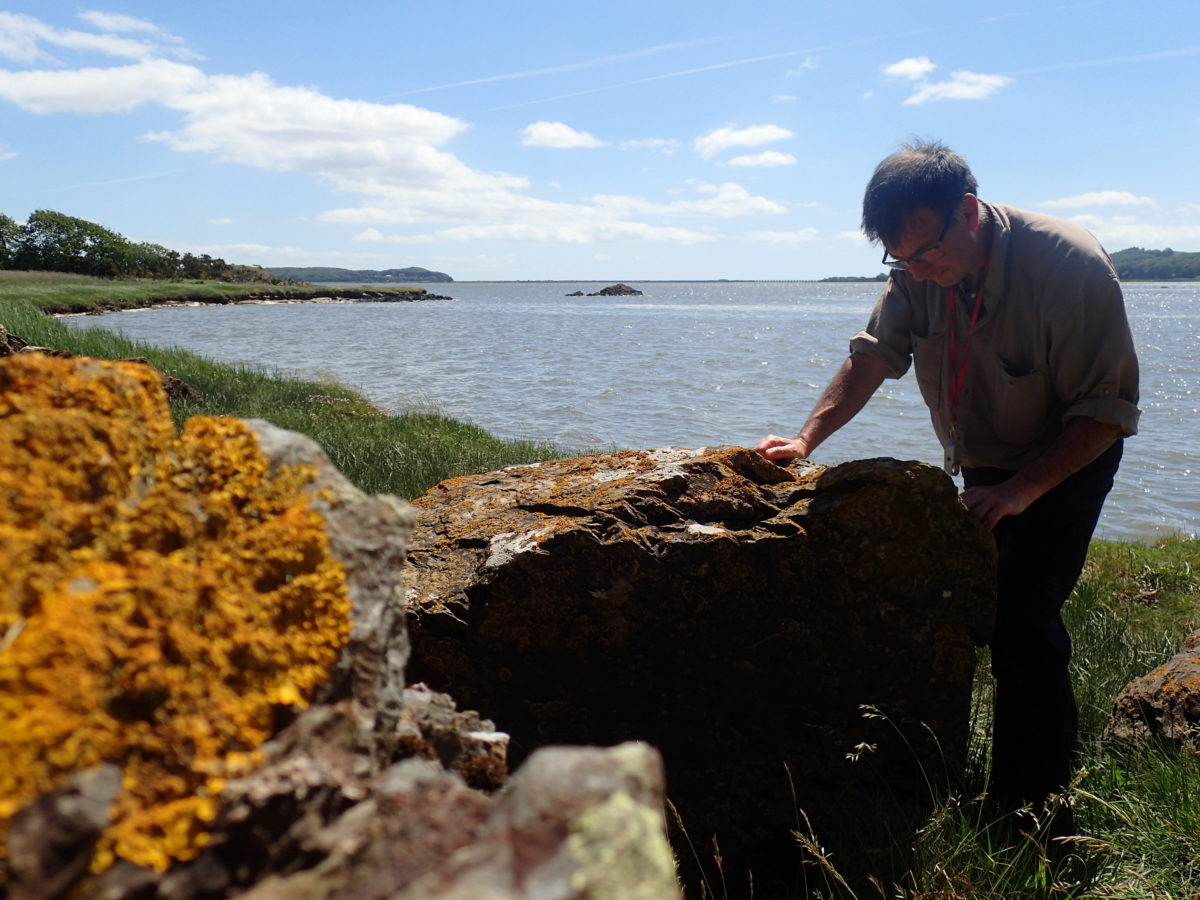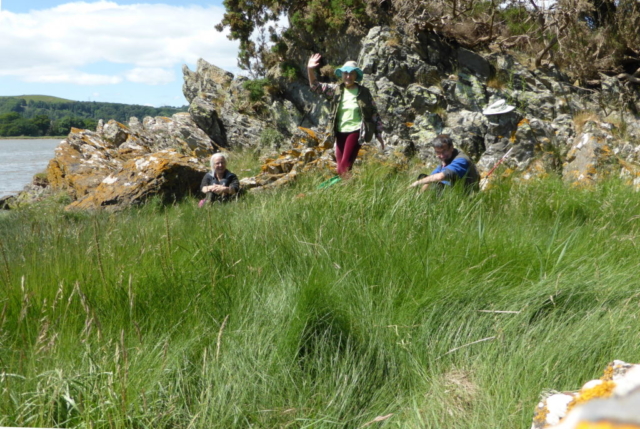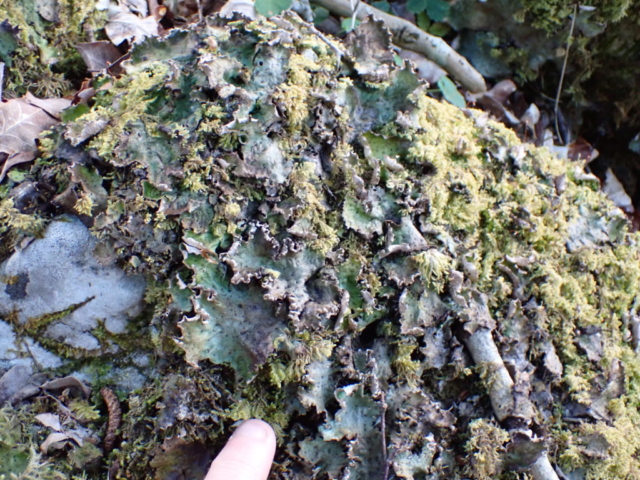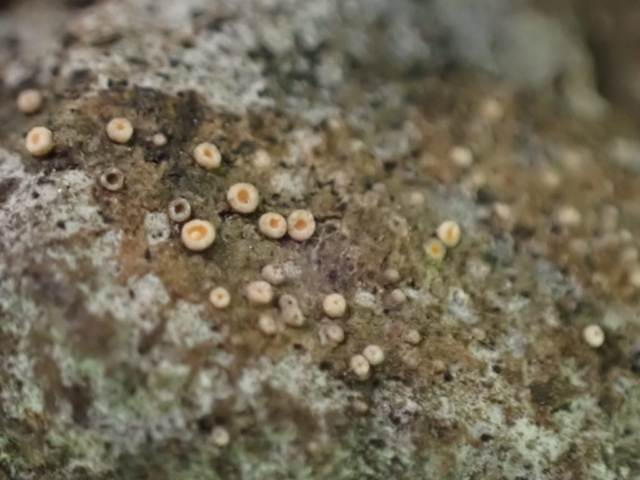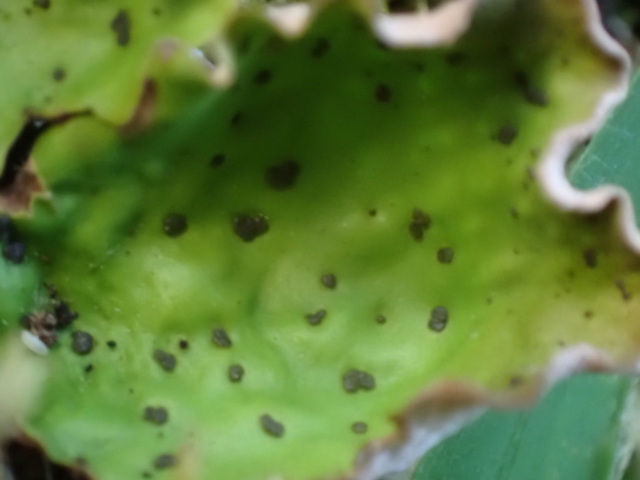Lichens
It was a small and select group of three who gathered on a lovely June day to look at lichens at Roudsea: this time the bryophyte group was rather larger!
For once, we made it out of the car park quite quickly: maybe the midges helped. But not before we had considered the question of whether to record something present on a temporary woodpile that obviously hadn’t originated there. What’s the form? We ambled slowly up the central valley boardwalk: contorted old yews growing out of the limestone cliffs gave shady sites for Acrocrodia conoidea; the hazels had Arthonia elegans: the variety of sedges gave lots of distraction opportunities.
Further on, just off the boardwalk, we lingered by a remarkable patch of Peltigera leucophlebia. Dull grey in the dry conditions, a quick dousing with water turned it bright green. I normally see P. leucophlebia in small scrappy patches on the open fellside or above limestone outcrops, but here it grows prolifically over mossy boulders and up a tree, covering maybe 2m by 2m, despite being shaded. The buckthorn above provided a good selection of nitrophilous species.
Further along the valley we examined more open limestone outcrops: Gyalecta jenensis, Opegrapha calcarea, Verrucaria baldensis, Caloplaca chrysodeta, and some lovely wild Aquilegias were found. Nearby ashes had Thelotrema lepadinum. But it was lunchtime so, in search of a sunnier sandwich spot, we headed out to the coast.
We ended up in a lovely suntrap with a view over tidal waters; a train crossed the viaduct and shelduck flew past. Nearby siliceous rocks provided a contrast to the morning’s limestone species: bright yellow Xanthoria parietina; the stretching lobes of Anaptychia runcinata; Rhizocarpon geographicum and R. richardii; Lecanora muralis, L. polytropa and L. gangaleoides.
Heading back through the oakwoods, we found Anisomeridium polypori and Parmotrema perlatum. But the woods weren’t rich in lichens: they have obviously been managed by clear felling in the past and will also have received pollution from Ulverston and Barrow over the recent centuries.
An “extra time” excursion onto the Moss boardwalk produced more species: acidophiles like Hypogymnia physodes and Parmeliopsis ambigua on pine trees; Mycoglaena myricae on bog myrtle and Normandina pulchella on hazel.
So, whilst we didn’t find any stunningly rare species at Roudsea, there was lots of interest. The variety of habitats make the place very special. Thank you to Natural England for the permission to visit- I’m sure I will want to return to find yet more things lurking there.
Pete Martin
